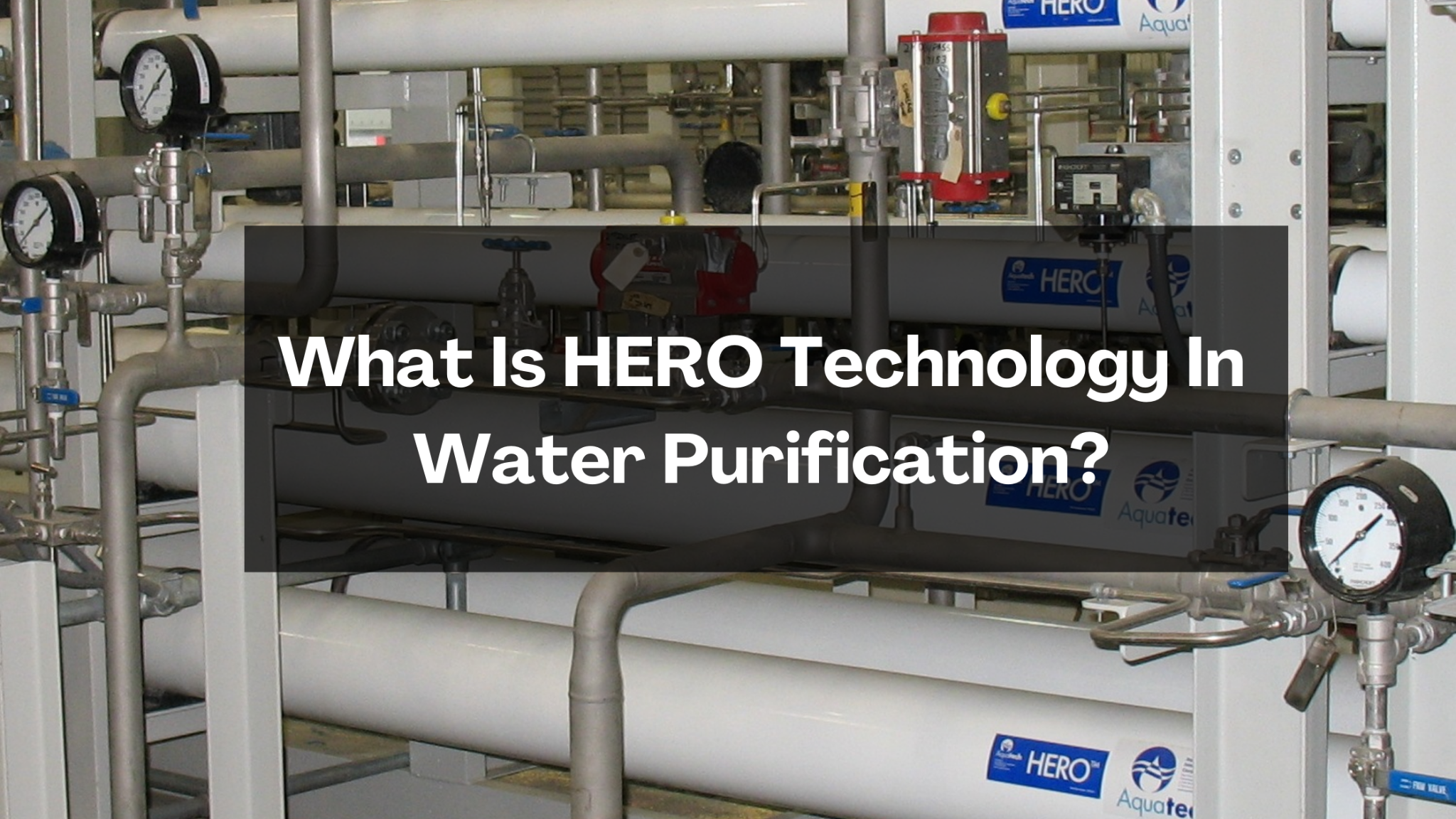What is HERO Technology?
HERO technology is known as High Efficiency Reverse Osmosis. It is meant to handle high silica and difficult-to-treat wastewater. In addition to increased recovery rates, the high-efficiency reverse osmosis process delivers substantial operational benefits by efficiently minimizing membrane fouling or scaling. While reverse osmosis (RO) is typically thought to be a less effective technique for treating cooling tower blowdown, this process has an outstanding track record. The main function of this wastewater treatment is-:
- Increased Plant Performance
- Reduced charges
- Low Maintenance
No doubt, there are several efficient reverse osmosis systems available in industry at present days. However, Hero technology offers you several benefits as well as viability to clean sewage or wastewater. It is the best and advanced type of reverse osmosis system that gives you clean drinking water.
Works can be done with the HERO technique-:
- Water with high TOC and Biological activity.
- Cooling tower blowdown
- Water with high silica content
- Tertiary treated effluent (sewage)
What Is The Working Of HERO Technology?
Prior to the semipermeable membrane that removes particles, a prefilter eliminates contaminants such as silt and chlorine from the water. A postfilter polishes the filtered drinking water after it exits the RO membrane. According to the amount of prefilters and post-filters in a system, reverse osmosis systems have different stages that are described below.
Wastewater Technology Stages
In a reverse osmosis system, the RO membrane is the main point, although other forms of filtration are used as well. A RO system has three, four, or five stages of filtration, depending on water quality. In addition to the RO membrane, every reverse osmosis water system includes sediment and carbon filters. Water goes through the filters before or after it passes through the membrane, which is why they are termed pre filters or post-filters.
Well, every stage includes different techniques and filters. Let’s have a look at them.
- A sediment filter is used to eliminate certain particles such as rust, dust particles, and many others.
- Carbon Filters are beneficial to reduce volatile organic compounds (VOCs), chlorine, and other pollutants that give water a foul taste or odor.
- Another filter or membrane is a semipermeable membrane. This membrane can remove up to 98 percent of the total amount of dissolved particles in a solution (TDS).
- Water is pre filtered before it enters reverse osmosis (RO). As part of the pre filtration process, silt and chlorine are removed using carbon and sediment filters.
- In a second step, the water is sent over the reverse-osmosis membrane to remove any dissolved particles, including those too tiny to be seen.
- Once the water has been filtered, it is pumped to a storage tank, where it.
- Once the storage tank is filled, the reverse osmosis system stops filtering water.
- Once the water filtration process is done, storage water transfers to another postfilter in order to filter it again. This is done to increase the drinking water quality.
How Safe Is Reverse Osmosis Water To Consume?
For your health and the health of your family, reverse osmosis water is the healthier and safer alternative. Particles, germs, and minerals dissolved in tap water can be reduced using reverse-osmosis systems; The process also removes pollutants that are difficult to detect, such as lead and arsenic, which may be detrimental to your health.
Reverse osmosis water will help you to get rid of the below-mentioned diseases-:
- High blood pressure
- Low fertility
- Skin problems
- Increased carcinogen production
- Skin problems can also be reduced by consuming reverse osmosis water
- You will feel the different tastes, smells, and feel during drinking reverse osmosis water.
Does Reverse Osmosis Wastewater Treatment Requires Maintenance?
- With a reverse osmosis system, what kind of maintenance is required? Certain people ask this. It would be best if you took care of your water filtration system in the same way you would any other equipment in your home. Reverse osmosis systems that are properly maintained can last a decade or more!
- Your reverse osmosis system installation should examine your equipment’s correct maintenance and maintenance plan prior to installing it in your house. There are a number of factors that will determine how often you need to change your carbon or membrane cartridges.
- Your reverse osmosis membrane is protected by the prefilter or sediment filter, which should be replaced annually. However, your local specialist may recommend changing it every six months for high-usage houses. According to the manufacturer, your membrane should last between two and three years if properly maintained.
According to the quality of your water, the carbon filter should be updated once or twice each year. In order to get detailed information about this, you must visit Aquatech.
How Long Does A Reverse Osmosis System Last?
Service and maintenance will determine the lifespan of your reverse osmosis system. Maintaining your reverse osmosis filtering system requires:
Change and dispose of filters Regular maintenance is required.
Thanks to the Water team of specialists, you don’t have to worry about anything. Your RO system is guaranteed to last a long time, and all parts are operating correctly, from the moment it is delivered until the moment it is maintained. Essentially, you get to enjoy better-tasting, safer water while we take care of everything else.
